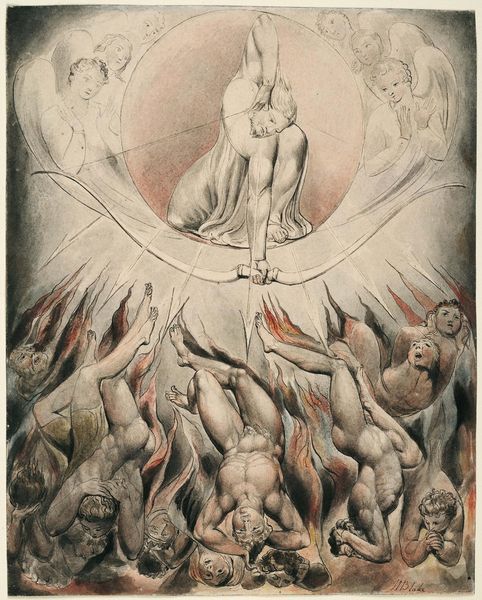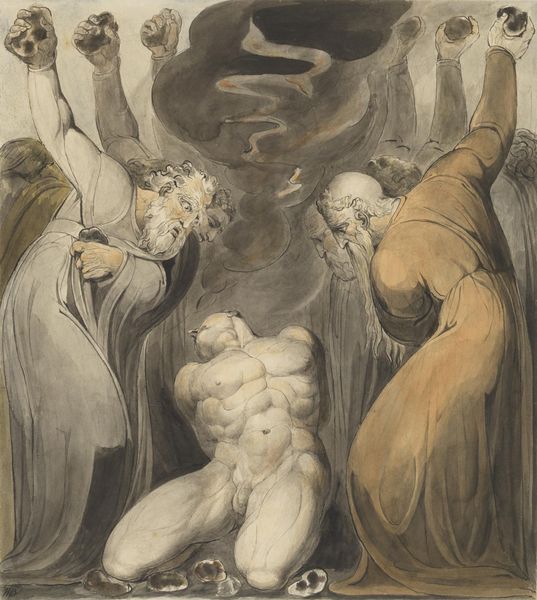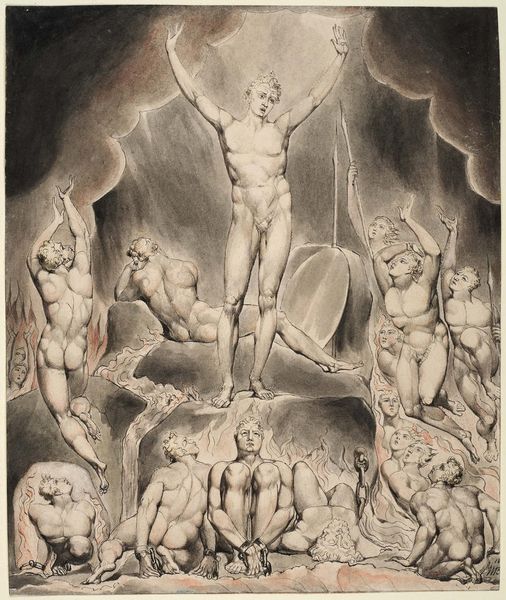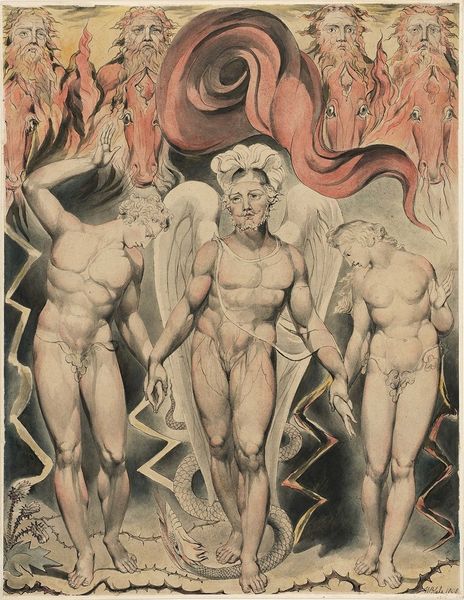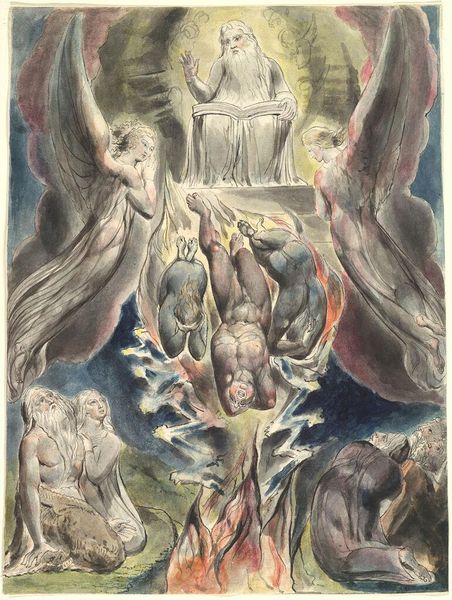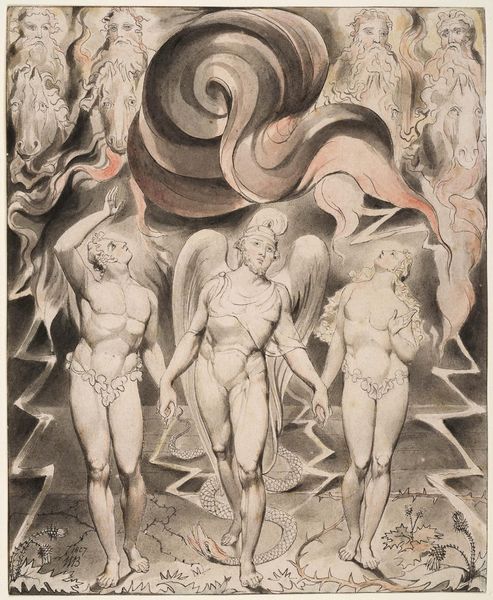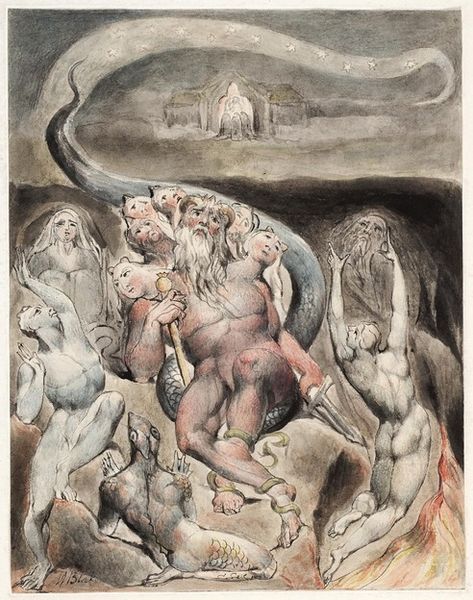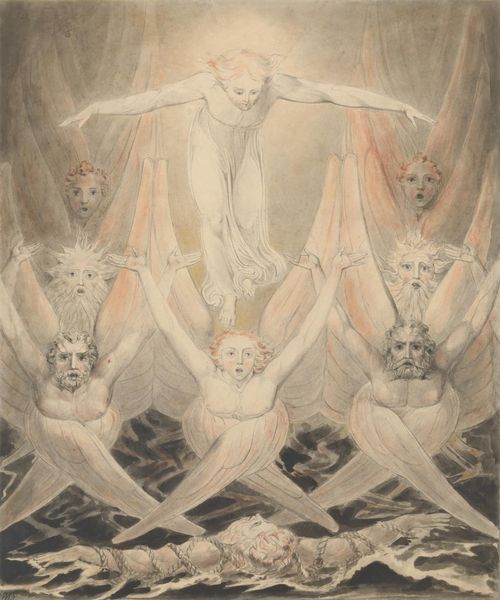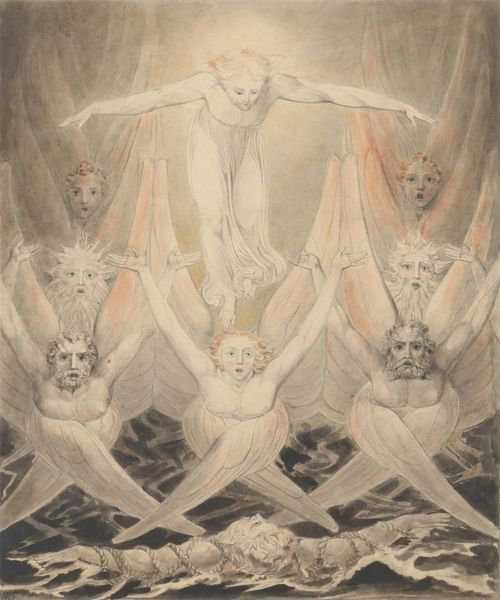
drawing, watercolor
#
drawing
#
narrative-art
#
figuration
#
watercolor
#
romanticism
#
mythology
#
watercolour illustration
#
history-painting
Copyright: Public domain
Curator: William Blake's watercolor illustration, "The Casting of the Rebel Angels into Hell," was created around 1808 and immediately strikes me as turbulent and nightmarish, even chaotic. What are your initial impressions? Editor: The twisting, falling figures certainly evoke a sense of horror and loss. You immediately sense a fall from grace—almost quite literally from what I observe. Curator: Precisely. Blake, both a poet and engraver, labored painstakingly on each of his watercolors, mixing his own pigments and experimenting with techniques. Notice the translucent layering— he achieves depth and luminosity with these relatively simple materials, mostly watercolors, pen and ink on paper. Editor: And this luminosity contrasts intensely with the darkness engulfing the rebel angels, speaking volumes about dualities: heaven versus hell, good versus evil. What I also notice is how Blake represents the concept of revolution through a very religious and historic lens; and this artistic approach begs us to examine structures of authority within history. Curator: His engagement with Milton's "Paradise Lost" is quite significant here. Blake deeply engages in interpretations of original text as an extension of craftsmanship; furthermore, one of the primary issues for him involved rebelling against the established Church. This directly reflects Blake’s personal ethos in how he produced art for a patron or followed academic norms. Editor: And this perspective is especially crucial when we see how power operates to condemn certain bodies to punishment and marginalization based on these values imposed onto identity. Do the bodies resist through expressions or do they accept their condemnation to fire? What types of identities have occupied roles in this scenario throughout human history? These are fundamental, complex issues to unravel. Curator: Right. It pushes against any passive viewing. One could spend a lot of time analyzing Blake's deliberate rendering of the male form too and asking why male and female forms appear distinctly different given this type of scenario. It’s such a layered artwork both for the period of time, and when we assess its meaning today. Editor: Indeed, and analyzing how the work circulates, how it has been used and understood across different times and socio-cultural contexts, can teach us a great deal about cultural beliefs. Curator: I'm left contemplating the role that artistic labor played in Blake’s spiritual and political beliefs; he ultimately transformed these ideals into visually striking, unforgettable art. Editor: For me, the image resonates because it captures those persistent power structures of condemnation throughout history, reminding me that any revolutionary moment needs to engage continuously to examine whose voices we risk silencing.
Comments
No comments
Be the first to comment and join the conversation on the ultimate creative platform.
